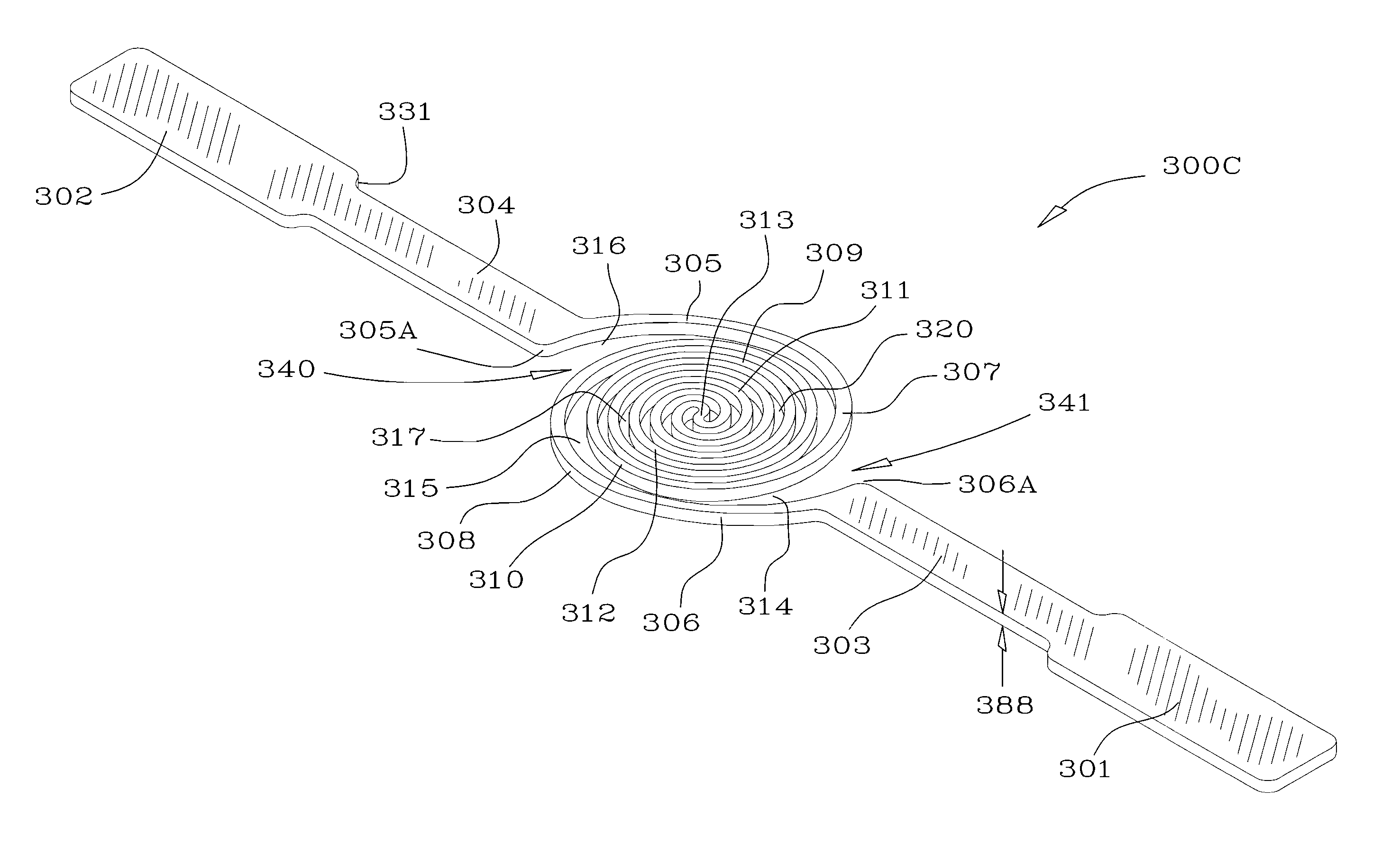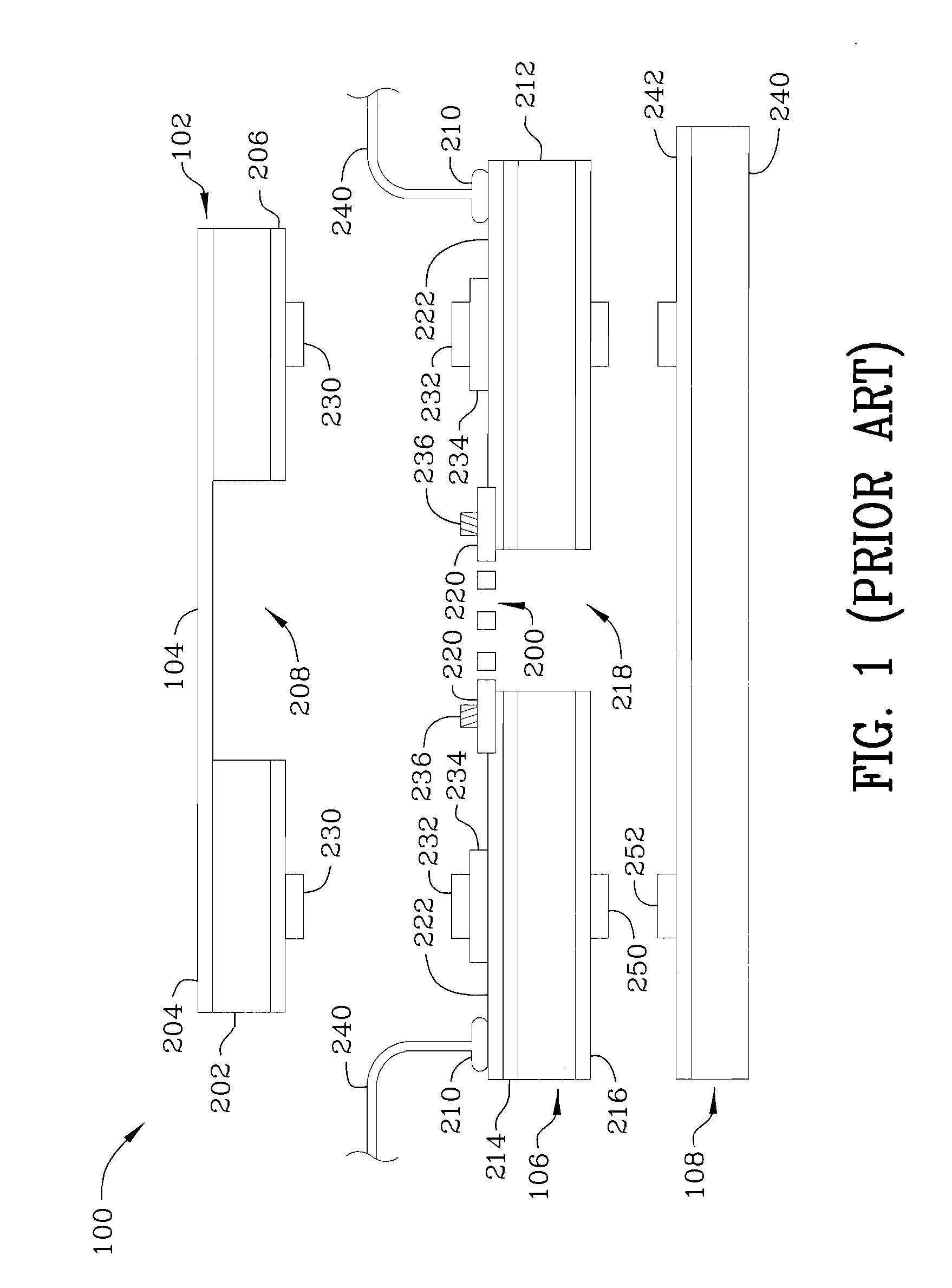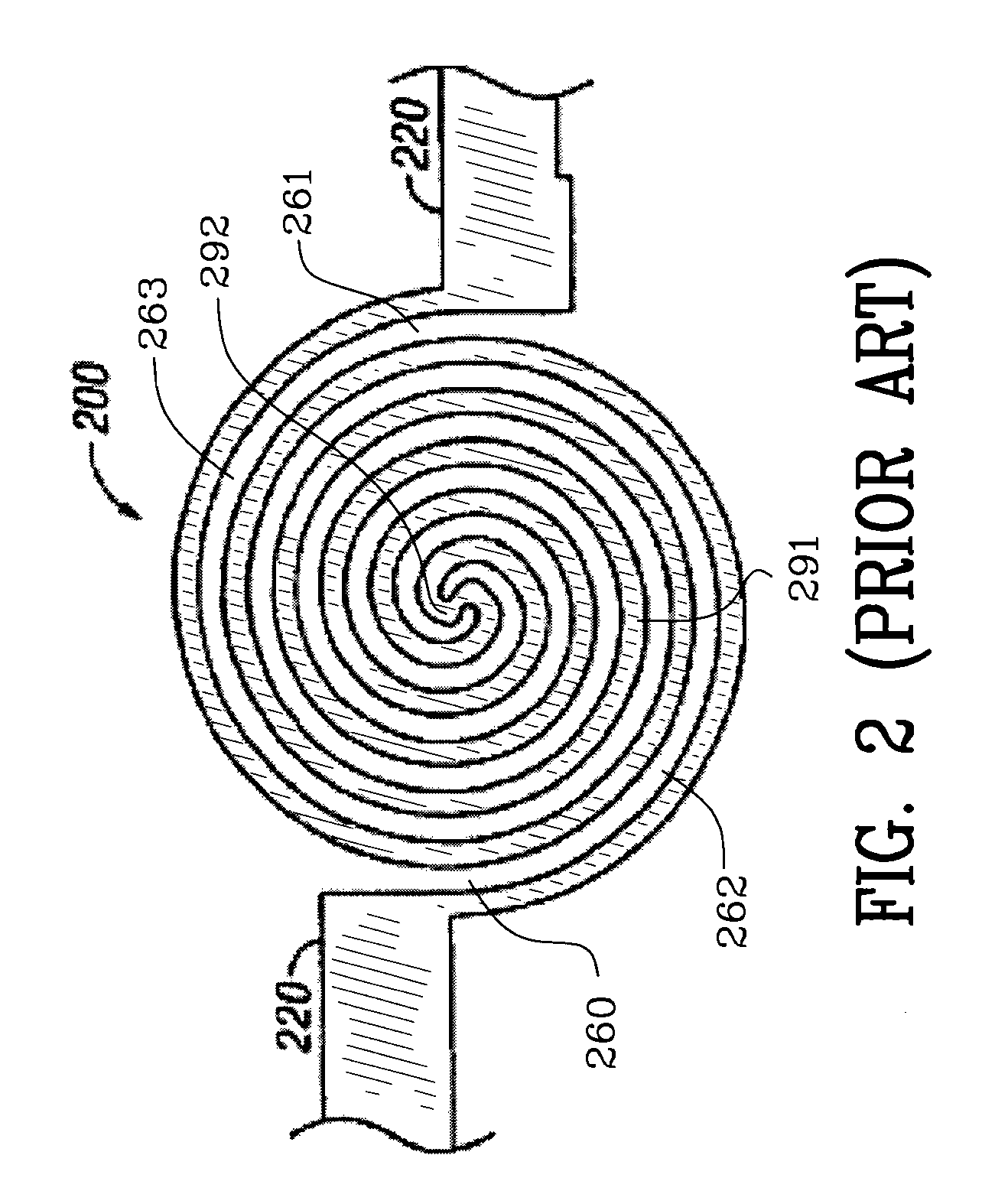Ultraminiature broadband light source and method of manufacturing same
a broadband light source and ultra-miniature technology, applied in the direction of optical radiation measurement, instruments, spectrometry/spectrophotometry/monochromators, etc., can solve the problems of partial shorting of a portion of a spiral turn, increasing the length of the spiral, and affecting the quality of the light sour
- Summary
- Abstract
- Description
- Claims
- Application Information
AI Technical Summary
Benefits of technology
Problems solved by technology
Method used
Image
Examples
Embodiment Construction
[0064]FIG. 3 is an illustration of the double-spiral element 300 of the instant invention having end contact portions 301, 302 which are divergent from the next adjacent spiral. By increasing the radius of the outer windings of the double-spiral, the inner windings are allowed to decoil while not contacting the outer windings or tabs so that the short path is less likely for a particular operating voltage. The net result is to allow more stable light output for a longer lifetime at a higher operating point for the filament.
[0065]End contact portions 301, 302 of the double-spiral filament contact ledge 405 of leadless chip carrier package 400 and are in electrical communication therewith. See, FIGS. 4 and 4A, which generally represent a commercially available leadless chip carrier package such as the one illustrated and made by Kyocera Corporation of Kyoto, Japan, Kyocera Drawing Number PB-C88231-JMI. It will be noted that the leadless chip carrier package includes a plurality of gol...
PUM
 Login to View More
Login to View More Abstract
Description
Claims
Application Information
 Login to View More
Login to View More - R&D
- Intellectual Property
- Life Sciences
- Materials
- Tech Scout
- Unparalleled Data Quality
- Higher Quality Content
- 60% Fewer Hallucinations
Browse by: Latest US Patents, China's latest patents, Technical Efficacy Thesaurus, Application Domain, Technology Topic, Popular Technical Reports.
© 2025 PatSnap. All rights reserved.Legal|Privacy policy|Modern Slavery Act Transparency Statement|Sitemap|About US| Contact US: help@patsnap.com



